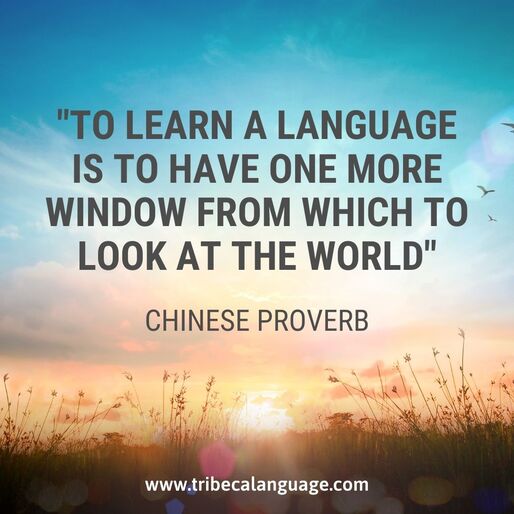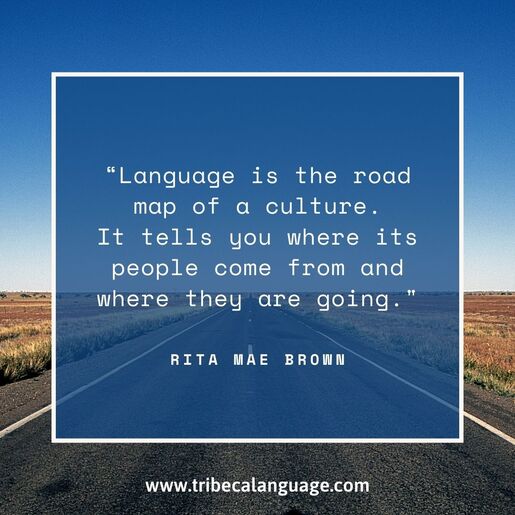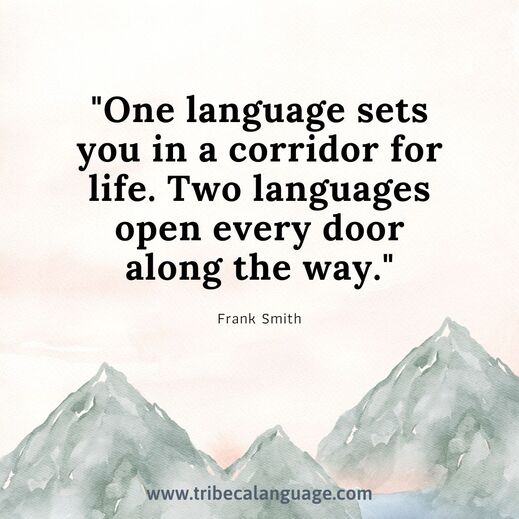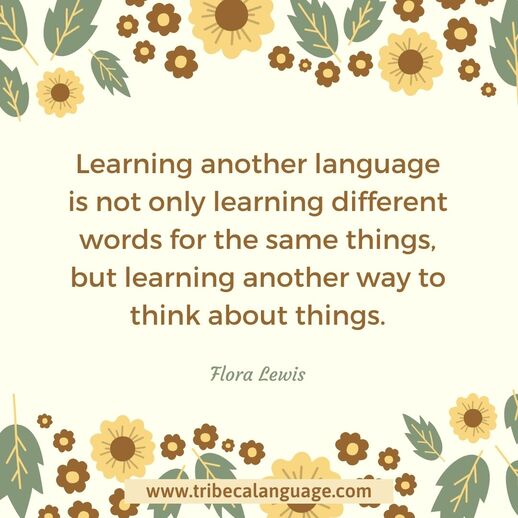|
The season of love is filling the air once again. Cut-out red hearts on window fronts, crowded flower shops, and aisles of chocolate truffles is the current neighborhood scenery. What’s not to love about... love? Although we associate Valentine’s Day with romance and grand gestures, we have extended the holiday to be more than that. In fact, the USA is known to celebrate the love of family, friends, neighbors, and not exclusively to just romantic relationships. But did you ever wonder how other countries celebrate Valentines Day’s? Believe or not, there are all sorts of different ways this holiday is observed worldwide. Let’s take a look! Denmark’s Way With Words
You may think Valentine’s Day has been around for centuries - but Denmark is an exception. It was until the 1990’s, that the holiday was even recognized! The history tells a tale of flower vendors who had hopes of making this day conventional. With no such luck, a popular supermarket chain called Netto decided to promote items with a “romantic” theme. The products were marketed during Valentine’s Day season and many people soon contributed to what made it mainstream. Today, some of the traditions include exchanging white flowers called “snow drops.” As well as exchanging cards with their loved one’s picture, and it so vital that this tradition is named the “lover’s card.” France Is For the Lovers It would be silly to not mention how this country celebrates Valentine’s Day. After all, their most popular city is known as “the city of love.” France typically acknowledges this holiday to romantic couples only. It is actually seen as a bit odd, or even frowned upon, to send Valentine’s gift to friends or family. Those in relationships will typically send each other flowers or go out for dinner. However, card giving is actually rare! This does not only happen for this particular day, but other holidays as well. France also creates special themed chocolates and pastries, but only at chocolateries and pâtisseries. China’s Most Popular Day of Marriage In China, most of traditions stem from Western Culture. Like the U.S., they too exchange flowers, chocolates, any small gifts. Specifically, men are encouraged to send only red roses, jewelry, or even a dress. Women will typically purchase manly items such as a watch or a tie. This day also follows a romantic dinner date, with a special menu. Movie theaters are an even bigger date spots for Valentine’s Day. In addition, there is one special tradition that is specific to Chinese culture. Those who are looking to wed or recently engaged often plan their wedding registry on Valentine’s Day. How romantic! Italy’s Ode To Romeo & Juliet Similarly to France, Italy has declared Valentine’s Day exclusively for the lovers and sweethearts. In fact, the day is also called “La Festa Degli Innamorati”, which translates to “The Day of Those Who Are In Love”. Much like American culture, they follow the tradition of exchanging chocolates and flowers. Some of the more Italian traditions includes incorporating certain themes that could relate to Valentine’s Day. The infamous region of Perugina, for instance, makes a special edition of their “Baci” chocolate candy. The chocolate is usually hazelnut centered but is replaced with a cherry filling for the occasion. It is also wrapped in a festive red wrapper, with a romantic phrase inside. Verona, located in Rome, designates a four-day Valentine’s Day festival to honor the birthplace and romance of Romeo and Juliet. The festival includes free concerts and a contest for the “best letter written to Juliet.” South Korea Breaks A Romance Norm Valentine’s Day is the perfect opportunity for the single women of South Korea. Unlike most traditional festivities, it is a day for a woman to make the first move. Women in Korea are expected to give chocolates to the man they are interested in or have feelings for. Men are actually not supposed to exchange a gift in return until March 14th, a holiday called White Day. This day is dedicated for the men who received chocolates on Valentine’s Day are supposed to give the women either white chocolate or lingerie. Some men even follow the “Rule of 3”, where he is supposed spend 3x more than what the woman spent. On the other hand, Valentine’s Day is still considered a big day for chocolate companies regardless. The most popular are Ferrero Rocher, Twix, and Chupa Chups. What are other interesting traditions to know about? There are other counties that have their own unique Valentine’s Day customs: In Germany, Valentinstag (Valentine’s Day in German) is considered an adult holiday. The most notable tradition is the lebkuchen – a ginger heart with a special message addressed to the person’s valentine, most likely Ïch liebe dich”(I love you) Valentine’s Day in Russia did not become popular until just 30 years ago, in 1991, after the collapse of the USSR. Russians in general exchange customary gifts. However, giving flowers is the utmost romantic gesture a woman can receive. In Mexico, this day is to celebrate the love for your family and friends.That is why this day is known as El Día del Amor y la Amistad (The Day of Love and Friendship). Japan has adistinctive way of celebrating Valentine’s Day. This includes giving 3 different kinds of chocolates to their loved ones depending on the type of relationships they have with them: ”Giri Choco” - 義理チョコ – known as the obligation chocolates are meant for co-workers and family members. ”Honmei Choco” - 本命チョコ is for romantic relationships or a romantic interest. ”Tomo Choco” - 友チョコ is for single women to give to their closest female friends. In Brazil, Valentine’s Day is not on February 14th, instead they have Dia dos Namorados (translated as “Lovers’ Day”) which falls on June 12th. The main reasons are to prevent any interference with the Carnival which usually happens around February 14th, and instead is on the eve of a very romantic Day – Saint Anthony’s Day. Saint Anthony is known as the patron of marriage of young couples. In India, Valentine’s Day is a recent tradition imported from the Western. On one hand, this is widely accepted by the younger more liberal generations. On the other hand, the older more traditional generations are having a hard time accepting a modern holiday – which creates protests and demonstrations over religious values in the country. As you can see, love is celebrated in all different ways across the world. It’s fascinating to see how countries all interpret Valentine’s day in their own unique way. The holiday reveals how, above all, love is a universal language we all partake in. Whether you enjoy an evening with your special someone or a spend the day with a friend, Happy Valentine’s Day! Xīn Nián Kuài Lè! Happy New Year! It’s once again that special time of year for the Asian community. About 2 billion worldwide, one fourth of the total global population, celebrates Chinese New Year. There are 3.8. million Chinese Americans who celebrate in the United States alone. The numbers are even closely compared to those who celebrate Christmas globally (also 2 billion!) So, what is it exactly that makes this holiday so special? On the surface it seems that this day is mostly about Chinese culture and festivities. However, there is a whole timeline of history and traditions that most of us are not even aware about.
What Exactly is Chinese New Year? The celebration of Chinese New Year is actually divided into three significant days; Little Year, Chinese New Year (a.k.a the Spring Festival), and the Lantern Festival. The holiday begins with Little Year, which lands on February 4th. This where all preparations begin for the New Year and last until New Year’s Eve. This will include traditions such as cleaning the hose to “sweep out” the bad luck of the past year. Other activities will include prayer ceremonies, which will vary depending to an individual’s religion. Earlier traditions included prayer to the “Kitchen/Stove God”, who is supposed to watch over members of the household. The most important and well-known day of the holiday is Chinese New Year, which is February 12th. The day is also referenced as the “Lunar New Year” and/or “Spring Festival”. The majority of common festivities occur, such as the display of fireworks, exchanging red envelops, and ancestry memorials. The Spring Festival refers to 16 days of celebration and festivals that occur leading up to the Lantern Festival. This takes place on February 26th. It is especially known for the display of numerous lanterns that hover all around the celebrated cities/town. A Rich History of Folklore and Tradition The holiday dates back from as early as 1046 B.C, during the Shang Dynasty - the earliest ruling dynasty of China to be established in recorded history. Its origin is described when people held ceremonies to honor their ancestors and the gods that they worshipped. This tradition occurred at the beginning or end of each year, where it followed the shifts of new dynasties. But why is this holiday also named the Lunar New Year? The rise and fall of emperors would follow what is still known today as the Chinese or Lunar calendar. Lunar phases and solar solstices would determine when it the new year would ring. This concept, under the rule of Han Dynasty - the second imperial dynasty of China - is still continued to determine the date till this day. That is why Chinese New Year starts with the first new moon of the year, which usually occurs between January 21 and February 21. The origins of the Lantern Festival, however, is not so clear. In fact, there are a couple of folkloric legends that have both religion and historical elements to it. One legend ties back under the rule of Emperor Ming - the second emperor of China's Eastern Han dynasty. Emperor Ming heard of news that Buddhism was spreading throughout China. One of their traditions included praying and lighting lanterns to Buddhist figures on the 15th day of the first lunar month. The emperor liked the custom and began to have lanterns throughout his palace and other temples. Another tale links it to Taoism, which states that the 15th day of the lunar month honors the birthday of Tianguan, god of the sky. The legend says that Tianguan loved festivities, and the people who worshiped him lit lanterns to celebrate. Customs and Food That Are Celebrated for Good Luck There are tons of cultural festivities that go along in celebrating Chinese New Year. As mentioned earlier, the preparation for the new year stems begins with a deep clean of the household to ward off any bad luck. However, it is also a time to do major shopping. Similarly to Christmas shopping, there is a ton of shopping that involves buying tons of food, new clothes, and decorations. The decorations are then hung on the eve of the new year, which consists of red lanterns and couplets. It is also said that the decorations are to bring blessings, health, and peace into the New Year. Another key aspect to the holiday is showing respect to ancestors. On New Year’s Eve, families will prepare an offering of different kinds of food. They will display the food in front of pictures and/or shrines as an offering and a way to let their ancestors “eat” first. What is considered the most important component of the holiday customs is the “reunion family dinner”. This also takes place on New Year’s Eve, where many different family members of all generations gather to have a large dinner. It is the reason why the season is known to be responsible for big travel congestion throughout the country. With dinner, foods are ritually made in a way that will bring good luck into the new year. There are seven foods that are considered “lucky” which include fish, dumplings, spring rolls, tangyuan (sweet rice balls), fruit, noodles, and niangao (glutinous rice cake). All these foods are supposed to promise wealth, happiness, and prosperity. The Chinese Zodiac and Year of the Ox According to the Lunar Calendar, 2021 will be the year of the Ox. What does that mean? For starters, we need to understand that there are twelve animals that make up the Chinese Zodiac: the rat, ox, tiger, rabbit, dragon, snake, horse, ram, monkey, chicken, dog, and pig. Each animal is supposed to represent a year in a 12-year cycle. It also is associated with different meaning for each person who is born under the year of the said animal. Western culture has been made to believe that if your sign is the same as the one for the New Year it is a sign of good luck. Unfortunately, it is considered the opposite in the Chinese culture. Even today this still rings true to those who celebrate! If the New Year happens to be the person’s Chinese Zodiac sign, they will be told to wear red underwear for the rest of the year to counter bad omen. This zodiac ideology is also traced back to folklores. It is believed that this links back to the Qin dynasty, which is heavily associated with animal worship. The Jade Emperor who was ruling at the time had ordered all twelve animals to his palace to determine the zodiac. Throughout history and even in today’s modern era, the Chinese Zodiac is more than just pseudoscience. Just like Western astrology, each of the twelve animals have a determined personality, with its own strengths and weaknesses. However, this is used to foretell an individual’s marriage life, career, and even fertility for many in the Asian community. The year of the Ox is supposed to predict success through hard work and discipline for 2021. However, each Zodiac animal has their own prediction. Be sure to check yours out! There are many components as to what makes this day so remarkable. Aside from extravagant celebration and festivities, there is a unique history behind it. We might have not even realized that there are traditions that carried through centuries (even to this present day!) If you are curious to learn about the holiday, check out your local neighborhood to participate in this joyful occasion. New York City is especially known for one of the grandiose events. Who knows, you might bring more good luck to yourself into 2021! There is a reason why Little Italy exists in NYC and why it has remained. Although it is not like it was before, much of the culture and influence has stayed in various neighborhoods throughout the city. Generations of Italians, that may even link back to great great grandparents still surround much of New York’s five boroughs. Iconic Italian names like Robert De Niro and Marisa Tomei is proof that the culture is still associated in New York. Italian is indeed a great language to know here in the Big Apple. So here are a few reasons why you should learn Italian as a native or newcomer New Yorker. 1) Getting Around Italian Speaking Neighborhoods
You’re going to immerse yourself in the Italian experience by learning the language. How so? If you learn Italian, you will get to discover other Italian neighborhoods as if you were a local. There are smaller neighborhoods in areas of Brooklyn and Queens that are still considered to be iconically Italian. One neighborhood in particular in Brooklyn, Bensonhurst, is known as “Brooklyn’s Little Italy.” Not only are there still plenty of restaurants and bakeries that are authentically Italian, but so are the owners. By learning Italian, you’ll be able to connect and understand the older generations that still inhabit this neighborhood. Italians genuinely are impressed when New Yorkers such as yourself take it upon themselves to appreciate the language. You’ll pick up on common pastimes specifically ranging from espresso runs to watching the weekly soccer game. Their friendly nature will extend to being invited everywhere! Including the local cafe, church community, and coveted food markets. 2) Appreciating Italian Opera Even More Italian food is a big part of NYC culture. However, there are other aspects of Italian culture that is relevant here in New York. A big part of Italian culture is music, especially opera. If you learn Italian, you will get to experience Manhattan’s Metropolitan Opera in a whole new light. Italy is known for their iconic contribution to opera performances. By understanding the language, you will have a deeper appreciation and love for the storyline and music. Notable opera performances such as La Boheme and Madama Butterfly are even more appreciated by understanding the Italian lyricism. 3) Rediscovering Italian Art in a New Light Not into opera? Learning Italian is a great opportunity to discover art. There is a reason why Italians are credited for their contributions to art history. You might believe that Italian art is only known for their Renaissance period. However, there are other Italian artists that are not as well-known who have contributed to modern art. By learning Italian you will get to familiarize yourself with modern artists such as Tina Modotti, Giorgio Morandi, and Piero Manzoni. Museums here in NYC such as the Center for Italian Modern Art, display drawings, photography, and sculptures of many Italian artists. 4) Conversing with Italian Tourists Did you know New York is a popular vacation spot for Italians? Believe it or not, many Italians love the idea of visiting NYC (including my own relatives). If you learn Italian, you will have a chance to put your skills to the test with tourists who come over summer break. You might have to go to populated tourist spots, but you can be almost guaranteed to run into Italians stumbling through the big city. It will also be an opportunity to meet native Italians and try carrying a conversation. If you are looking for a summer job, Italians are the most likely to participate in city tours and destinations. Not only will it land you a job as a tour guide, but an occasion to form conversations with Italians. You never know if you could meet a new friend or potential visit to Italy! 5) Discovering Authentic Italian Food When we think of New York we automatically picture Manhattan. To be more specific, we also connect Italian Americans living in New York to Little Italy. The area still has plenty of Italian restaurants and cuisine, but there are other Italian neighborhoods that are often ignored. By learning Italian, you can frequent yourself with locals who know authentic and lesser-known Italian cuisine. There are plenty of hidden Italian bakeries and restaurants in areas outside of Manhattan. L & B, Garguilo’s, and Joe on Avenue U are just a few hidden gems located in Brooklyn alone. As you enter these restaurants, you will be able to read the menu and converse with the original owners. Some of these restaurants will include specific Italian delicacies from regions such as Sicilian, Neapolitan, and Milanese. Now that you learn the language, you will be able to identify only the most authentic Italian food there is. Bonus Note: Eataly, a staple for Manhattan-bound Italians On the surface, once you walk in the door, it will probably look like an ordinary Italian supermarket. On the front display, you would see generic Italian brands that you would find in most NYC Italian neighborhoods. But, once you walk down the aisle, you will find snacks that only an Italian native would know about. Snacks that they would have dig out from their grandmother’s cabinet. Or that yummy afternoon treat that you would indulge in after school. From gourmet tomato sauce to artisan brick-oven bread and authentic Christmas Panettone, you could find the best Italian imported products there … unless you travel to Italy yourself! Is your child in the middle of taking SAT and AP exams? The process can be exhausting, especially when teens are trying to figure out what college level courses to take. Although advanced science and math exams will be encouraged, encourage your child to take language. Your child will most likely be required to take a language as a high school requirement. If he/she already has high grades in her language course, taking an AP language exam is a great way to earn extra college credits. The journey to getting into college may not be easy, but there are other reasons why taking a language entrance exam is beneficial. Increased Chance to College Acceptance
You might also think having a high GPA and taking AP classes is how you get into most colleges. However, you will be surprised to know that a lot of universities are actually interested in high schoolers who know a foreign language. If your child has hopes to go into a top university such as Princeton, he/she should definitely take a language placement test. Research has shown that Ivy League Colleges accept more applications that involve knowing or studying a foreign language. Many colleges are starting to see that students who know a second language have more opportunities after they graduate. Guaranteed College Credit There are other perks that taking a language placement exam can also offer. If students are looking to earn a Liberal Arts degree, there is a minimum requirement to take a full year of language. If a student scores over 200 there he/she already gains enough credit to meet the language requirement. But what if your child would like to continue learning the language she gained credit for? There are opportunities for students who decide to minor in a language, especially if it is a popular spoken language such as Spanish or Chinese. (It can open many doors in careers like business, tourism, and education.) Higher SAT Scores You may think learning a language can be a distraction for a high schooler’s other studies. Perhaps you might say that the extra studying for SAT's and AP’s is already enough. However, did you know learning a language improves your child’s test scores? According to College Board, students who studied a foreign language scored better than peers who did not study a foreign language. Students who also studied a foreign language for all four years of high school scored higher than those who studied for two years. Studies have also shown that high schoolers who learned a second language showed improvement in both English and Math scores. Who knew prepping for a language AP exam can help your child’s other classes. Finer Language Skills Assessment Are you curious how fluent your child is in the language they are taking? The language placement and AP exam are great ways to figure out a student’s fluency in foreign language. Both exams are divided into four sections: speaking, listening, reading, and writing. The test results that a student will receive reveals how well they scored in each section. Naturally, there will be areas one will score better on. This will be beneficial to point out what areas your child needs to work on. Whether it has to do more with grammar or conversation practice, a student can see which steps to take to become fluent. Greater Career Opportunities Did you know that those who know a second language have more job opportunities? According to careerprofiles.info, being fluent in a second language has advantages in many career fields such as marketing, administration, banking, education, law, government, etc. Recent research also suggests that there will be an increase of about 42% in demand for those who are able to translate and interpret in the job force. Still not convinced? Those who list a second language on their job resumes are likely to be hired than their counterpart who does not. The reason being that there is simply a demand in the job market for those who speak more than one language. There is even a 10-15% higher pay raise in those who are bilingual, according to BRIC Language System. Better Grammar Foundation As stated previously, the AP, SAT and Regents language both test a student knowledge on his/her grammar skills. You may think that learning to understand and/or speak the language holds the most importance. However, college courses in language heavily focuses on grammar structure. Especially as a student advances to higher course levels, much of it will be writing and reading. High schoolers who already introduced to learning about grammar foundation have a great chance to strengthen these skills in college. Studies have shown that studying the structure being grammar and vocabulary help gain better cognitive skills. In other words, students who studied a second language scored higher in math, reading comprehension, and vocabulary than those who did not. Easy Option for Native Speakers Lastly, if your child is already bilingual, taking a language placement exam is an easy and guaranteed way to gain credit. You may not have thought of this, but there are already tons of requirement classes a student will need to take in college. Why not let one of them be a language he/she already knows for an easy A? It’s an even better option for those who grew up in a bilingual home but never fully grasped the second language. Your child will already have an understanding at home and excel the foreign language in class. Or perhaps your child will begin learning at school and continue his/her language skills by practicing at home. This can also establish better skills grammatically (as mentioned before) and guarantee your child will be fluent. Although studying for these college exams can be scary, there are many benefits in taking them. This is a chance for students to be able to discover their talent and/or passion for learning languages. There will be advantages in college but also in their job search well after. So if your child has a knack for language, encourage them to take a placement or AP language exam! You never know where it could take them. AP Tests are available: AP Chinese Language and Culture - May 14th, 2021 - 12 pm Local Time (Paper, In school) - Computer- based May 21st, 2021 - 12 pm Local Time (Paper, In school) - Computer- based June 4th, 2021 - 8 am Local Time (Paper, In school) - Computer- based AP French Language and Culture May 10th, 2021 - 8 am Local Time (Paper, In school) May 21st, 2021 - 12 pm Local Time (Paper, In school) June 4th, 2021 - 12 pm Local Time (Paper, In school) AP German Language and Culture May 4th, 2021 - 12pm Local Time (Paper, In school) May 21st, 2021 - 12 pm Local Time (Paper, In school) June 4th, 2021 - 12 pm Local Time (Paper, In school) AP Italian Language and Culture May 14th, 2021 - 8am Local Time (Paper, In school) May 21st, 2021 - 8am Local Time (Paper, In school) June 4th, 2021 - 8 am Local Time (Paper, In school) AP Japanese Language and Culture May 5th, 2021 - 8 am Local Time (Paper, In school) - Computer- based May 21st, 2021 - 8 am Local Time (Paper, In school) - Computer- based June 4th, 2021 - 8 am Local Time (Paper, In school) - Computer- based AP Latin May 21st, 2021 - 8am Local Time (Paper, In school) June 4th, 2021 - 8 am Local Time (Paper, In school) AP Spanish Language and Culture May 11th, 2021 - 8 am Local Time (Paper, In school) May 21st, 2021 - 8 am Local Time (Paper, In school) June 4th, 2021 - 8 am Local Time (Paper, In school) AP Spanish Literature and Culture May 7th, 2021 - 8 am Local Time (Paper, In school) May 21st, 2021 - 12 pm Local Time (Paper, In school) June 4th, 2021 - 12 pm Local Time (Paper, In school) Now that we’re spending more time indoors we have more time to spend with family. We miss hearing the kids in our classrooms and hallways, and we wanted to continue to support you while they’re home.We’ve put our heads together and came up with some ways to keep your kids mentally active and engaged in productive activities. While also giving you the opportunity for some much-needed time to yourself. 1. Setup a pandemic proof virtual playdate We've all seen how efficiently kids can adjust to a new situation, and they've spent a significant part of their lives interacting with an image on a screen. Research has shown that today most children behave similarly to having a friend on a screen as they do when they are physically next to them. Let's face it, there are some added benefits: setting up an online playdate saves you a bunch of time and energy from making a trip to and from your kid's friend’s house. You’ll be able to watch them eagerly walking around the house, showing their room, introducing pets, and playing music for hours - or until their time is up. They’ll be able to interact and develop social skills in a comfortable and safe environment, without you having to clean up all the added messes. Thank goodness for technology! 2. Play a game on your app Whether it’s on a cell phone or a tablet, devices offer endless possibilities for engaging material. There are free apps for helping with school subjects like math, science, and language learning, as well as a remarkable benefit to games and puzzle apps. Apps like “Cut the Rope” are today’s tetris, capturing children’s attention and training quick thinking, pattern recognition, and forward thinking. In fact, statistics show that nearly 85% of people will read this article from a mobile device. Parental controls only take a few minutes to set up and you can make sure they’re getting the most out of their device time. Most devices and apps allow some sort of monitoring capabilities for parents and are relatively easy, just make sure you use a password your kids won't be able to guess. Your kids are familiar with the devices, so they'll hardly consume any of your time or energy if any at all when they're on a device. They'll be completely engaged, and even if it's for 30 short minutes, it'll give you a window to recharge from a long day or keep them out of the kitchen long enough for you to make dinner. 3. Find new ways to read Your kids read more than they know. It may not be a traditional book, but anything from comic books or the storyline in a video game technically requires reading. Learning their favorite athlete's bio or stats, or even stories and articles about their favorite shows or movies counts in our book. With the right topics, reading will be less like eating vegetables, and more like watching TV. If they're interested in the topic, they'll read about it. It’s all about finding what they like, it doesn’t have to be traditional, it just has to connect with them. Education is all about connecting, the more your child feels connected to something the more engaged they’ll be. You’ll feel the silence once they get into it - you'll know you’re on track when they don't want to stop. Ahhhh, the feeling of sweet silence... 4. Learn to connect with a new language Languages aren’t as difficult to learn as we're led to believe. The excitement of being able to engage with someone in another language is what we live for at Tribeca Language. Have you ever met someone that speaks 3, 5, even 9+ languages and just thought to yourself, I wish I knew one of those? Research has shown, language learning uses multiple areas of the brain simultaneously - making it the most mentally engaging activity on this list. We live in a connected world where our kids are exposed to more culturally and linguistically than we were even 10 years ago. Many of your kids play sports or are in clubs with teammates that English isn’t their household language - you might be one of them. Beyond benefits like better job opportunities, or mental and cultural growth, language learning can be a fun and interactive experience that your kids will want to continue. 5. Get all hands-on deck with cooking or baking It'll need a little more of your attention and energy than some other suggestions on the list, but delicious food will be sure to keep them focused. Your kids will be completely focused on each step because they'll quickly realize a small change or mistake can make a big difference in the end - and no one wants to eat cookies that aren't right. We practiced math measuring and portioning. We got exercise stirring and mixing caramels and sauces for what felt like hours. Even when to know if something was ready from the look, smell, and feel of it. Cooking and baking with my family growing up was a way to connect with each other, but in the end, it's also a great way to kill a few hours. 6. Getting hands-on with arts and crafts Any teacher will tell you, providing creative outlets is a powerful way to enable your kids to be mentally and physically engaged with something. It could take a couple of trips to the craft store but once you find the activity they enjoy, it's relatively hands-off and minimal energy from you. Of course, some activities may need a little more supervision, but your kids will be engaged, and they’ll be eager to show you what they did when they're finished. It’s more about what your child feels comfortable with and enjoys than anything else. Arts and crafts allow your kids to “create” something, it could be a drawing or a sculpture. For most, the physical result of their work will create a sense of pride and an enthusiasm to do more of it. Your kids will have a task they're excited about and eager to "work on" for long periods of time. It'll also offer an outlet for them to find ways to express themselves as they grow and mature. 7. Stimulate mind, body, and spirit, with fitness activities There's so much more to regular exercise than its benefits for your physical, mental, and emotional health. Having your kids join you in physical activities will help them learn their own limitations and ways to calm their minds and relax - a skill many of us forget in the relentless non-stop life as an adult. Yoga, for instance, is an activity for any age and ability. It's a great way to help you and your kids learn to be calm under tension, improve your breathing, and provides a positive outlet to exercise with minimal impact. Spending time in nature also has a way to calm our minds - just picture the feeling of tranquility and calmness of the wind blowing through the treetops. Hikes allow time to enjoy the outdoors but also provides fresh air and a break from the busy world we live in. A screen can stimulate sight and sound, but it doesn't come close to the stimulation and engagement they'll experience during physical activities. 8. Use the old-fashioned storytelling trick This is another one that you’ll need to be more involved in, but it’s well worth keeping your kids engaged and having them use their imaginations. It can be a story about when you or a family member were their age or could be a complete original you make up on the spot. The characters and setting can be made-up but the more familiar the theme of the story the more they’ll be reeled into it. As you engage their imagination and creativity try to find a balance of telling and having them ask questions. Kids love to ask questions, to the point that you may have started to wonder if they were some kind of evil genius trying to make you go insane. Sometimes they don’t even care about the answer! They’re just trying to get you to acknowledge something - Anything. To counteract this seemingly never-ending loop, offer them a story. 9. Your kids will love the attention and amazement they receive when they learn to play an instrument. Playing music is an activity that for better or worse you can hear while you're cleaning up the room next to theirs, but you'll quickly be able to hear when they're focused on the music. Whether it's the title track of their favorite movie or the latest pop song, someone has probably created a version of it that can be played on most instruments. Learning to play an instrument requires time and focus to connect a sound with a physical action - like strumming a chord on a guitar. From the piano to the harmonica, learning a note takes practice and memorization for it to become more fluid and sound it's best. It’ll be rough at first, but with regular practice, they’ll gain the confidence and want to play their new song for anyone that will listen. Fortunately, the internet is filled with material kids want to learn. But the reality is, like language learning, having a formal teacher is by far the best way to learn an instrument efficiently. There’s no cookie cutter solutions when it comes to kids. We all like different things and have different things that excite and engage us, but we hope this list will help your kids find a productive activity to focus their energy on. Even if you’ve been looking forward to reconnecting with your family, it’s good to remember a little time for yourself can be just as beneficial as an engaging activity. These aren’t cookie-cutter solutions, but we felt they’re great places to start.
Please click the contact link below if you have any ideas or if there's something you’d like us to write about to help you. We love hearing your feedback and pride ourselves on taking time away from lessons to get to know you (the parents) more and offer you as much support as we can. Learning a new language is challenging, and sometimes even frustrating. There might be a thousand times that you want to give up. If you are learning a new language, or preparing to start learning a new one, here are 10 inspiring quotes that will keep you motivated. Always remember: keep going and never give up! Quote #1: "A special kind of beauty exists which is born in language, of language, and for language." - Gaston Bachelard Quote #2: "Knowledge of languages is the doorway to wisdom." - Roger Bacon Quote #3: “To learn a language is to have one more window from which to look at the world.” - Chinese Proverb Quote #4: “Language is the road map of a culture. It tells you where its people come from and where they are going.” - Rita Mae Brown Quote #5: "If you talk to a man in a language he understands, that goes to his head. If you talk to him in his own language, that goes to his heart." - Nelson Mandela Quote #6: "Learn a new language and get a new soul." - Czech Proverb Quote #7: "One language sets you in a corridor for life. Two languages open every door along the way." - Frank Smith Quote #8: "Learning another language is not only learning different words for the same things, but learning another way to think about things." - Flora Lewis Quote #9: “Do you know what a foreign accent is? A sign of bravery - Amy Chua Quote #10: "you can never understand one language until you understand at least two." - Geoffrey Willians
|
Details
AuthorAlessandra Lanno considers herself both an avid reader and writer. Born and raised in Archives
June 2021
Categories
All
|
|
Our Mission
|
Proudly powered by Weebly

















 RSS Feed
RSS Feed